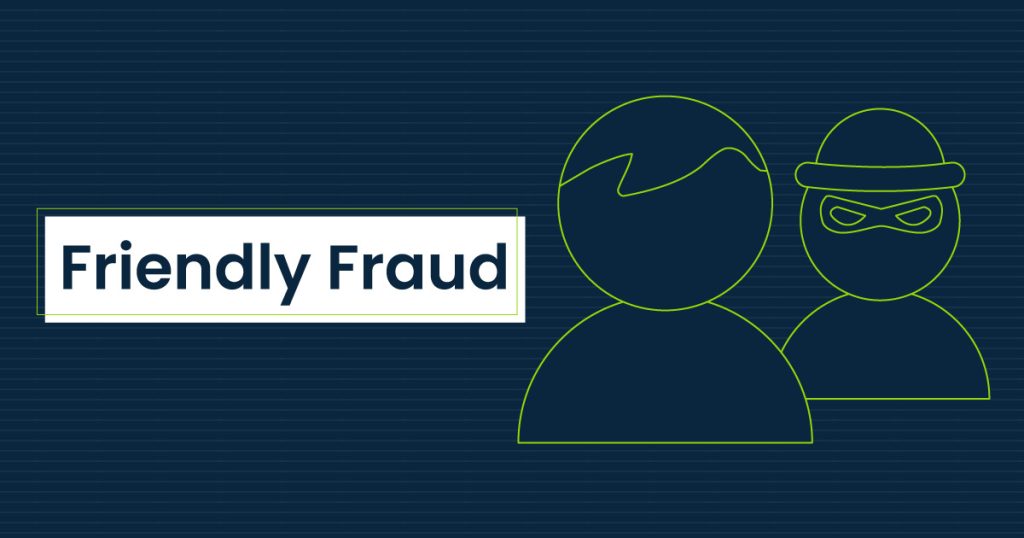Friendly fraud is a growing problem for online businesses. In 2023, friendly fraud accounted for nearly 76% of all chargebacks, resulting in over $40 billion in global losses. As eCommerce expands, understanding and combating friendly fraud is more critical than ever.
This article outlines the types of friendly fraud, its causes, impacts on businesses, and strategies to protect against it.
Types of Friendly Fraud
Friendly fraud appears in several forms, each with unique challenges. Understanding these types is essential for prevention.
- Accidental Friendly Fraud
- Happens when a customer forgets about a purchase or doesn’t recognize it due to unclear billing descriptors.
- Often results from misunderstandings or poor communication between the merchant and the customer.
- Deliberate Friendly Fraud
- Involves customers intentionally abusing the chargeback process for financial gain.
- This type of fraud is similar to digital shoplifting, where consumers falsely claim non-receipt of goods or unauthorized transactions.
- Refund Abuse
- Consumers request refunds while retaining the products, exploiting lenient return policies.
- Family Fraud
- Occurs when family members, often children, make unauthorized purchases using the cardholder’s information.
- The primary cardholder disputes the transaction, unaware it was legitimate.
Causes of Friendly Fraud
Understanding the root causes of friendly fraud is key to developing effective prevention strategies. Here are the most common triggers:
- Buyer’s Remorse
- Nearly 30% of friendly fraud cases stem from buyer’s remorse, where consumers regret impulsive purchases and file chargebacks instead of returning the items.
- Misunderstandings
- 20% of chargebacks result from customers not recognizing transactions due to unclear billing descriptors.
- Impulse Purchases
- Impulse buys often lead to friendly fraud when consumers later dispute the transaction as unauthorized.
- Dissatisfaction
- Poor product quality or delayed deliveries account for over 25% of chargebacks in the eCommerce sector.
- Family Members Using Cards Without Permission
- According to VISA, 16% of friendly fraud cases involve family members using a cardholder’s information without their knowledge.

Impact on Businesses
Friendly fraud affects businesses in multiple ways, including financial losses, operational inefficiencies, and reputational damage. The following table highlights the primary impacts:
| Impact Area | Description | Statistics |
|---|---|---|
| Financial Losses | Loss of revenue from reversed transactions, including product loss and fees. | Average loss per chargeback: $190 (VISA) |
| Reputation Damage | Negative reviews and public perception issues from customers who resort to chargebacks. | 15% decrease in customer retention post-chargeback |
| Increased Administrative Costs | Time and resources spent on disputing chargebacks, including gathering evidence and submitting claims. | 2 hours per chargeback dispute (MasterCard) |
| Higher Chargeback Ratios | Increased fees and potential penalties from credit card companies if chargeback ratios exceed thresholds. | 25% increase in fees for high-risk merchants |
High chargeback ratios can lead to penalties from credit card companies, including higher fees or account termination. For example, VISA requires merchants to keep chargeback ratios below 1% to avoid being classified as high-risk.
Merchanto.org, a trusted partner of VISA and MasterCard, specializes in chargeback prevention, offering tools to help businesses reduce these ratios. Learn more about their services here.
How to Prevent Friendly Fraud
While challenging, friendly fraud can be mitigated with effective strategies:
- Clear Communication and Customer Service
- 75% of chargebacks can be avoided through proactive customer communication. Ensure that customers are informed about policies and address concerns promptly.
- Sending confirmation emails with transaction details reduces misunderstandings.
- Transparent Return Policies
- Clearly outline return policies on your website. 60% of customers who initiate chargebacks claim they were unaware of their return options.
- Accurate Product Descriptions
- Mismatches between product expectations and reality contribute to 20% of chargebacks. Provide accurate descriptions and images.
- Use of Fraud Detection Tools
- Implement fraud detection tools that analyze transaction data for suspicious activity.
- VISA Secure and MasterCard Identity Check help verify transactions in real time.
- Order Tracking and Confirmation Emails
- Providing order tracking links and confirmation emails reduces chargebacks by 30%.
- Blocking Serial Offenders
- Monitor and block customers who repeatedly file chargebacks without valid reasons. 10% of customers are responsible for over 50% of chargebacks.
The following table compares the effectiveness of various fraud prevention strategies:
| Prevention Strategy | Implementation Cost | Effectiveness | Sources |
|---|---|---|---|
| Clear Communication | Low | High (75% reduction) | Checkout.com, Stripe.com |
| Transparent Return Policies | Low | Medium (60% reduction) | VISA, MasterCard |
| Accurate Product Descriptions | Low | Medium (20% reduction) | Braintree.com |
| Fraud Detection Tools | Medium | High (85% reduction) | VISA Secure, MasterCard Identity Check |
| Order Tracking & Confirmation Emails | Low | High (30% reduction) | Shopify.com, Stripe.com |
| Blocking Serial Offenders | Medium | High (50% reduction) | VISA, MasterCard |

How to Respond to Friendly Fraud
When friendly fraud occurs, a swift response can mitigate its impact. Key steps include:
- Investigate the Dispute Thoroughly
- Gather all relevant transaction data, including order confirmations and delivery proofs.
- Submit Supporting Evidence Promptly
- Provide the issuing bank with detailed evidence supporting the transaction’s legitimacy.
- Improve Customer Service
- After a chargeback, contact the customer to understand their concerns and prevent future disputes.
- Work with Payment Processors
- Engage with your payment processor to understand chargeback trends and receive advice on prevention.
The following table summarizes the response steps and their benefits:
| Response Step | Action | Expected Outcome |
|---|---|---|
| Investigate Dispute | Collect and review all transaction details | Improved understanding of fraud type |
| Submit Evidence | Provide detailed documentation to banks | Increased chance of chargeback reversal |
| Improve Customer Service | Address customer concerns post-chargeback | Reduced future chargeback occurrences |
| Work with Payment Processors | Use processor tools for trend analysis | Enhanced fraud prevention and response strategies |
Conclusion
Friendly fraud is a complex issue that requires a strategic approach to manage effectively. By understanding its types, causes, and impacts, and implementing robust prevention strategies, businesses can reduce their exposure to friendly fraud.
As friendly fraud evolves, so too must the strategies to combat it. Staying informed and adapting to new threats is essential for protecting your business in the digital economy.



